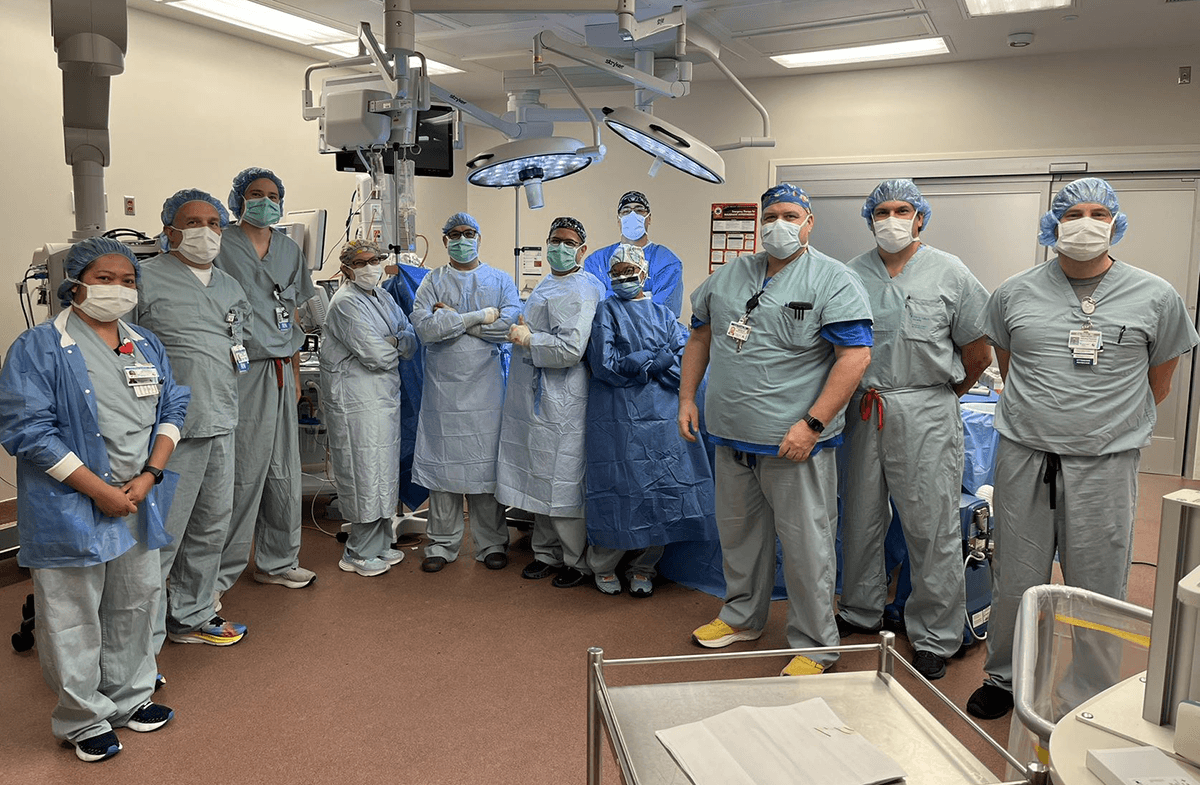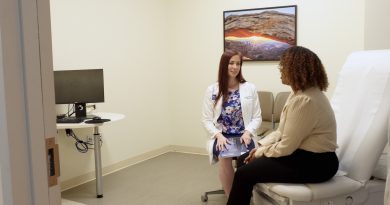Baylor Medicine surgeon performs costal margin reconstruction for slipping rib syndrome
In a groundbreaking advancement for the treatment of slipping rib syndrome (SRS), Dr. R. Taylor Ripley , professor of surgery in the David J. Sugarbaker Division of Thoracic Surgery at Baylor, has successfully performed one of the first costal margin reconstructions in Texas at Baylor St. Luke’s Medical Center. This innovative surgical procedure offers significant relief for patients suffering from the debilitating effects of SRS. Ripley is one of only a few surgeons currently performing this technique in the U.S. and was trained by Dr. Adam Hansen at West Virginia University, who pioneered the technique.
 Slipping rib syndrome is a painful condition in which one or more of the lower ribs become hypermobile due to weakened or damaged cartilage. This leads to pain and discomfort as the ribs move out of their normal position and push on nerves. If not properly diagnosed and treated, this condition can potentially lead to long-term disability and chronic pain and severely impact quality of life.
Slipping rib syndrome is a painful condition in which one or more of the lower ribs become hypermobile due to weakened or damaged cartilage. This leads to pain and discomfort as the ribs move out of their normal position and push on nerves. If not properly diagnosed and treated, this condition can potentially lead to long-term disability and chronic pain and severely impact quality of life.
The prior surgical technique for treating SRS can lead to the recurrence of symptoms and the need for additional surgery. In contrast, this new costal technique has been shown to significantly lower patients’ pain, decrease the need for pain medications and may decrease the need for additional surgeries.
Symptoms of SRS:
- Sharp or stabbing pain in the lower chest or upper abdomen
- A sensation of “popping” or “clicking” in the ribs
- Pain that worsens with movements such as twisting or bending
- Pain that may radiate to the back or shoulder
Causes of SRS:
- Injury or trauma to the ribcage
- Repetitive strain or overuse, particularly in activities involving twisting motions, such as golf
- Congenital malformations in the rib cartilage, such as those seen in hypermobility disorders like Ehlers-Danlos Syndrome
Diagnosis and treatment
Diagnosis of SRS typically involves a clinical examination where a doctor may reproduce the symptoms by applying pressure to the ribs. Imaging tests such as CT scans, X-rays, MRI or ultrasound are often normal. Diagnostic injections of local anesthetic may help confirm the condition.
Treatment options for SRS range from non-interventional methods like rest, physical therapy and pain management with medications or injections to surgical interventions when conservative treatments fail. Traditional surgical options include sutured repair and costal cartilage excision, both of which have limitations and potential for recurrence of symptoms.
Costal margin reconstruction: a new hope
Costal margin reconstruction represents a significant advancement in surgical options for SRS. This technique involves removing the problematic cartilage and autotransplanting part of the cartilage between the ribs to prevent further nerve impingement. The cartilage and ribs are then secured with a dissolvable plate, allowing for healing while maintaining enough flexibility for normal breathing.
Ripley’s expertise and adoption of this cutting-edge technique promise improved outcomes for SRS patients in Texas and around the country. This procedure not only offers pain relief but also reduces the need for revision surgeries and dependency on pain medications, enhancing the overall quality of life for patients.
By Tiffany Harston, communications associate with the Michael E. DeBakey Department of Surgery



